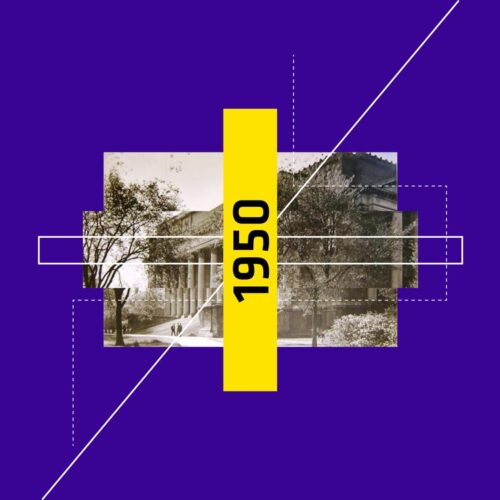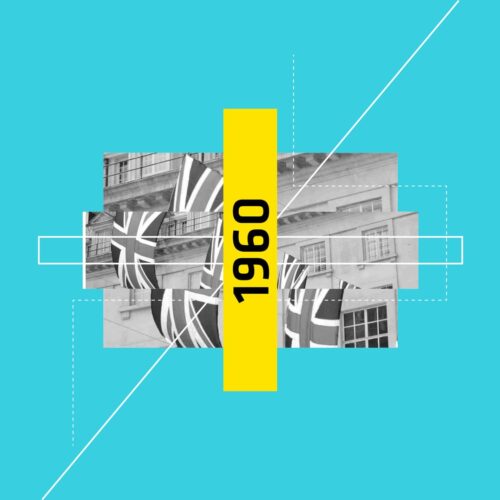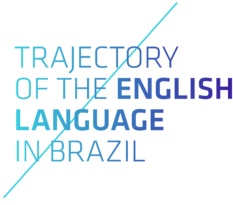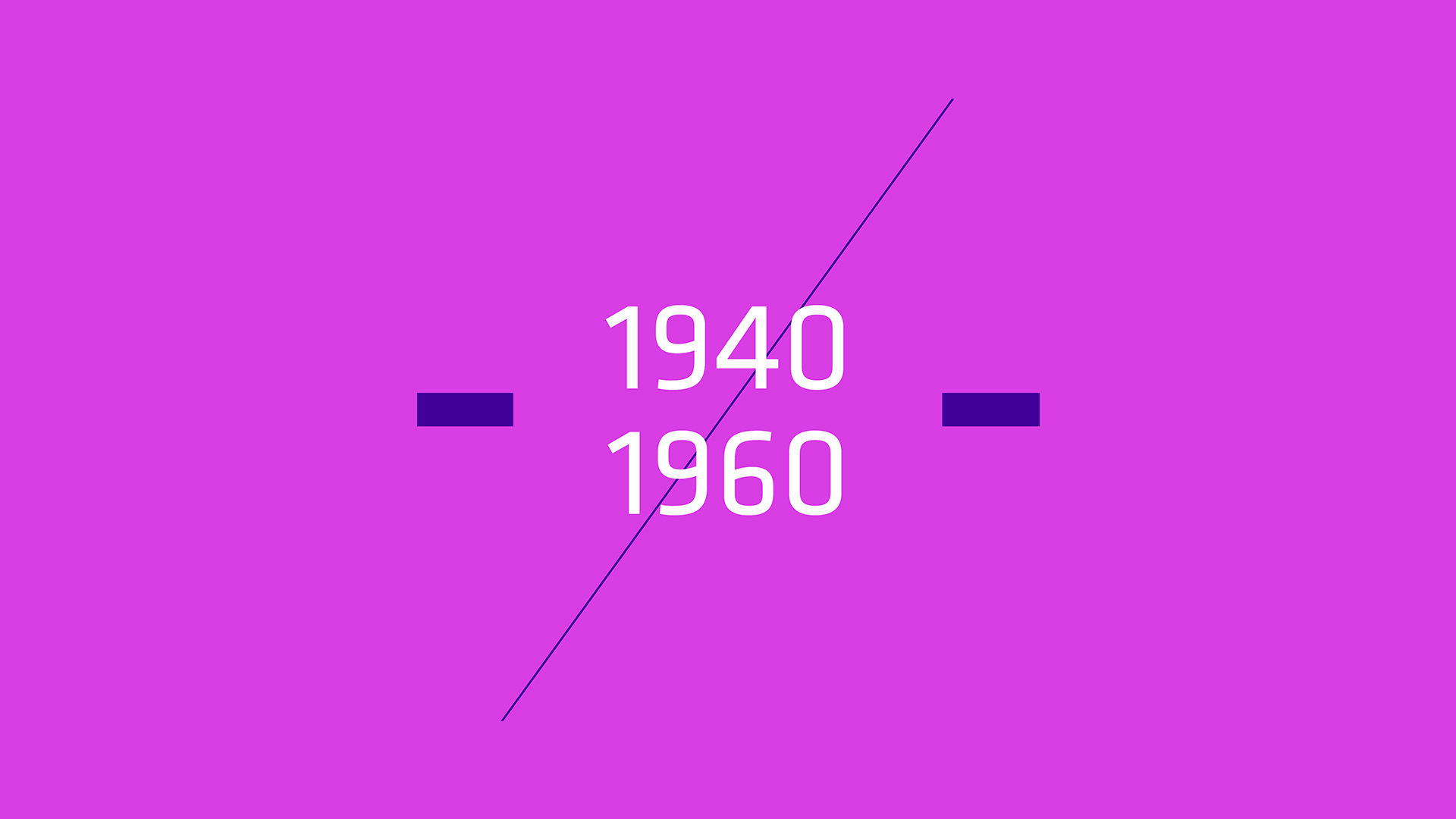1940
Grammar textbook of the English Language is published in Porto Alegre
In 1880, Frederico Fitzgerald published A gramática da língua inglesa (The grammar of the English language) in Porto Alegre. In 1940, its 34th revised and expanded edition came out. Grammar was used a lot in the first half of the 20th century. It included lists of words with their translation, verb conjugations and translation exercises. Subsequently, many others came along, with phonetic transcription and some even with recordings to indicate pronunciation.


1942
Minister Gustavo Capanema makes teaching four languages mandatory
Have you ever imagined students leaving school speaking four languages or more? This was the idea of the Minister of Education and Health Gustavo Capanema, a great reformer of secondary and higher education. The minister dedicated 35 hours a week to languages, equating to 15% of the curriculum. In lower secondary education, it was mandatory to study Latin, French and English; in secondary education, French, English and Spanish. In the classical course, one could choose between Latin and Greek.
1945
Decree formalises the role of the British Council in Brazil
In August, President Getúlio Vargas signed Decree no. 19.446, which officialised the British Council’s activities in Brazil. Its mission remains the same today: to strengthen ties between Brazil and the United Kingdom in the areas of arts, education and the English language. At the time, the organisation granted many internships and scholarships in British institutions. In addition, it encouraged the establishment of Cultura Inglesa branches in Brazil’s main capital cities.


1950
American universities develop teaching method
It was also called the Army Method and was developed by US universities to teach English to regimented indigenous and Latin Americans. Based on structuralist and behaviourist theories, it consists of exposing the student to oral communication to the point of speaking like a native person from the USA. The army paid little attention to writing. Instead, it prioritised the act of listening, repeating, memorising and oral exercises with words and phrases.
1950
João Fonseca defends a didactic model with an emphasis on spoken language
At the end of the 1940s, grammar and translation manuals gave way to textbooks with an emphasis on the spoken language. In Brazil, João Fonseca defended the model with the books Inglês Falado and Novo Inglês Falado (Spoken English and New Spoken English). Many schools adopted his books in the 1950s and 1960s for lower secondary education, equivalent to the final years of primary education. The teaching method proposed was the pattern drill, a type of exercise in which the student repeats the same basic structure, modifying some elements.


1950
The first language franchise starts its work in the country
Instituto de Idiomas Yázigi (original name at the time) started in a single room in a building in São Paulo and was the first language school to have a franchise system in the country. Its founders, Fernando Heráclio Silva and César Yázigi, promoted the English language and expanded teaching. Later, they transferred the family management of the company to the Multi group (later acquired by Pearson). Today, Yázigi remains present in several capitals and large cities in Brazil.
1952
Fisk proposes a teaching method
In 1950, Richard Fisk came to Brazil to visit his brother and decided to stay. He started teaching English, including through programmes on TV Tupi and TV Rio. His first school, opened in 1952, in the neighbourhood of Bela Vista in São Paulo, started with sixty students. Richard developed didactic material based on the differences between Portuguese and English grammatical structures and created an organised way to present them. Fisk started their franchise system in 1962.


1960
Songs by artists from different countries help spread the English language
The arrival of new means of communication in Brazil – such as the telegraph, telephone and television – increased the influence of the United States and England in Brazil. In the 1960s, songs in English carried social, political and spiritual messages. Lyrics by those such as Bob Marley, Bob Dylan, John Lennon, Joan Baez and the Beatles, very popular at the time, increased the prestige of the language and contributed to denunciation movements against injustice and awareness of reality in the country and in the world.
1960
Three types of language courses are offered in the country
At the time, language teaching in regular schools was precarious, and private commercial courses were an alternative. The binational institutes (Cultura Inglesa and Centros Binacionais Brasil-Estados Unidos) stood out for their quality, while the franchised courses had great appeal, thanks to investments in advertising, in addition to ready-to-use and unified plans and materials. There were also courses at independent schools with teachers who did not follow the teaching methods of a franchisor.


1960
English textbooks are written, edited and printed in mass in Brazil
The popularisation of English teaching in the 1960s led to greater competition between publishers in the publication and distribution of textbooks. To make production cheaper, books began to be written, edited and printed in mass in Brazil on a more regular basis. It was a hit in English schools. In addition to the more affordable price, the national editions had a greater variety and suitability to the profile of Brazilian students.
From the 1960s onwards
Teaching franchises standardise teaching materials and boost access to the English language
Since the 1960s, English franchises have invested in advertising, with an emphasis on teaching plans and textbooks. These commercial materials were produced locally and together with English language teachers. The idea was to guarantee the standardisation of its teaching methods, meaning that they could be applied in the same way in different classrooms and with the same level of quality in all of the network’s branches. This system boosted the teaching and access to the language.



